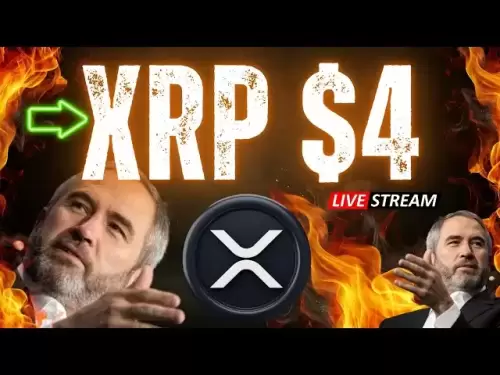-
 Bitcoin
Bitcoin $118300
-1.72% -
 Ethereum
Ethereum $3591
-0.69% -
 XRP
XRP $3.478
-3.53% -
 Tether USDt
Tether USDt $1.001
-0.01% -
 BNB
BNB $737.7
-0.54% -
 Solana
Solana $177.3
-2.40% -
 USDC
USDC $0.9999
-0.01% -
 Dogecoin
Dogecoin $0.2538
7.04% -
 TRON
TRON $0.3256
-0.85% -
 Cardano
Cardano $0.8332
-3.48% -
 Hyperliquid
Hyperliquid $44.80
-3.30% -
 Stellar
Stellar $0.4672
-6.09% -
 Sui
Sui $3.828
-5.98% -
 Chainlink
Chainlink $18.15
-3.41% -
 Hedera
Hedera $0.2655
-7.16% -
 Bitcoin Cash
Bitcoin Cash $517.5
-0.64% -
 Avalanche
Avalanche $23.89
-2.37% -
 Shiba Inu
Shiba Inu $0.00001519
-0.45% -
 UNUS SED LEO
UNUS SED LEO $8.973
0.13% -
 Toncoin
Toncoin $3.211
-2.54% -
 Litecoin
Litecoin $103.5
-3.58% -
 Polkadot
Polkadot $4.313
-3.90% -
 Uniswap
Uniswap $10.31
0.67% -
 Monero
Monero $325.4
-2.88% -
 Bitget Token
Bitget Token $5.049
3.51% -
 Ethena USDe
Ethena USDe $1.002
0.04% -
 Pepe
Pepe $0.00001346
-2.96% -
 Dai
Dai $0.9999
-0.02% -
 Aave
Aave $322.1
-2.93% -
 Bittensor
Bittensor $411.9
-4.70%
How to analyze KDJ on weekly and monthly lines? Can KDJ be used for long-term operations?
The KDJ indicator, useful for long-term crypto trading, consists of K, D, and J lines and helps identify trends and reversals on weekly and monthly charts.
May 22, 2025 at 02:21 pm
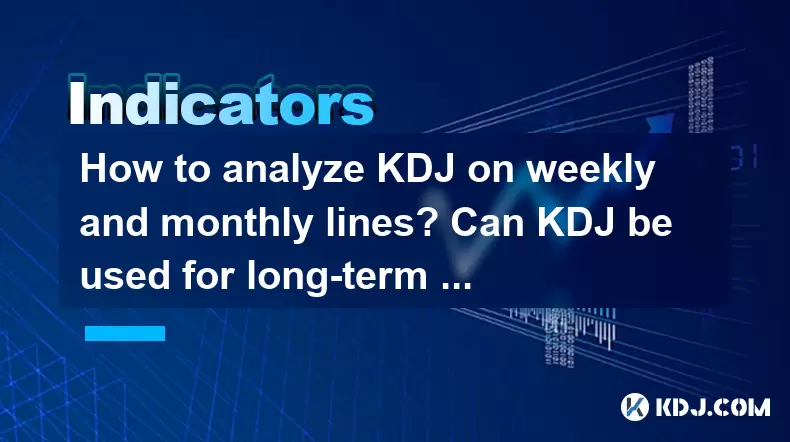
Analyzing the KDJ indicator on weekly and monthly lines is a valuable skill for traders interested in long-term cryptocurrency operations. The KDJ, also known as the Stochastic Oscillator, is a momentum indicator that compares a closing price of a cryptocurrency to its price range over a certain period. By applying the KDJ to weekly and monthly timeframes, traders can gain insights into long-term trends and potential reversal points. In this article, we will explore how to effectively analyze the KDJ on these timeframes and discuss its suitability for long-term operations.
Understanding the KDJ Indicator
The KDJ indicator consists of three lines: the K line, the D line, and the J line. The K line represents the fastest line and is the most sensitive to price changes. The D line is a moving average of the K line, providing a smoother representation of the momentum. The J line is derived from the K and D lines and is used to identify overbought and oversold conditions.
To calculate the KDJ, the following formulas are used:
- K = (Current Close - Lowest Low) / (Highest High - Lowest Low) 100*
- D = SMA(K, 3)
- J = 3D - 2K
Where SMA stands for Simple Moving Average, and the period for the Lowest Low and Highest High can be adjusted based on the timeframe being analyzed.
Setting Up KDJ on Weekly and Monthly Charts
To analyze the KDJ on weekly and monthly lines, traders need to set up their charts accordingly. Here's how to do it:
- Select the appropriate timeframe: Choose either the weekly or monthly chart depending on your long-term analysis needs.
- Add the KDJ indicator: Most trading platforms allow you to add the KDJ indicator to your chart. You may need to search for it under the name "Stochastic Oscillator" or "KDJ."
- Adjust the settings: The default settings for the KDJ are usually 9, 3, and 3, representing the periods used for calculating the K, D, and J lines, respectively. For weekly and monthly charts, you might want to increase these periods to better reflect long-term trends. For example, you could use 14, 3, and 3 for weekly charts and 20, 3, and 3 for monthly charts.
Interpreting KDJ Signals on Weekly and Monthly Charts
When analyzing the KDJ on weekly and monthly charts, traders look for specific signals that can indicate potential trend reversals or continuations. Here are some key signals to watch for:
- Overbought and Oversold Conditions: When the KDJ lines move above 80, the market is considered overbought, suggesting a potential downward correction. Conversely, when the lines fall below 20, the market is oversold, indicating a possible upward correction.
- Crossovers: A bullish signal occurs when the K line crosses above the D line, suggesting an upward momentum. A bearish signal is generated when the K line crosses below the D line, indicating downward momentum.
- Divergence: If the price of the cryptocurrency makes a new high or low, but the KDJ lines fail to follow, this can signal a potential reversal. Bullish divergence occurs when the price makes a lower low, but the KDJ makes a higher low. Bearish divergence happens when the price makes a higher high, but the KDJ makes a lower high.
Using KDJ for Long-Term Operations
The KDJ indicator can be a powerful tool for long-term operations in the cryptocurrency market. By focusing on weekly and monthly timeframes, traders can better understand the broader market trends and make more informed decisions about their long-term investments.
When using the KDJ for long-term operations, consider the following strategies:
- Trend Confirmation: Use the KDJ to confirm long-term trends identified on the weekly or monthly charts. If the KDJ aligns with the trend, it can provide additional confidence in the trade.
- Entry and Exit Points: Look for KDJ signals that align with your long-term trading strategy. For example, if you're looking to buy, wait for the KDJ to indicate an oversold condition on a monthly chart before entering the trade.
- Risk Management: Combine KDJ signals with other technical indicators and fundamental analysis to manage risk effectively. For instance, use support and resistance levels to set stop-loss orders and take-profit targets.
Combining KDJ with Other Indicators
While the KDJ is a powerful tool on its own, combining it with other indicators can enhance its effectiveness for long-term operations. Here are some complementary indicators to consider:
- Moving Averages: Use moving averages to identify the overall trend and confirm KDJ signals. For example, if the KDJ indicates a bullish crossover and the price is above a long-term moving average, this can strengthen the bullish signal.
- Relative Strength Index (RSI): The RSI can help confirm overbought and oversold conditions identified by the KDJ. If both indicators show the market as overbought or oversold, the signal is more reliable.
- MACD: The Moving Average Convergence Divergence (MACD) can help identify momentum shifts that align with KDJ signals. A bullish MACD crossover along with a bullish KDJ crossover can indicate a strong upward trend.
Practical Example of KDJ Analysis on Weekly and Monthly Charts
To illustrate how to analyze the KDJ on weekly and monthly charts, let's consider a practical example using Bitcoin (BTC).
Weekly Chart Analysis:
- Open a weekly chart of Bitcoin and add the KDJ indicator with settings 14, 3, and 3.
- Look for overbought and oversold conditions. If the KDJ lines are above 80, the market may be due for a correction. If they're below 20, a potential upward move could be on the horizon.
- Watch for crossovers. If the K line crosses above the D line, it's a bullish signal. If it crosses below, it's bearish.
- Check for divergence. If Bitcoin's price makes a new high but the KDJ fails to follow, it could indicate a bearish reversal.
Monthly Chart Analysis:
- Switch to a monthly chart of Bitcoin and adjust the KDJ settings to 20, 3, and 3.
- Analyze the same signals as on the weekly chart but focus on longer-term trends. Monthly signals are less frequent but can indicate significant market movements.
- Use the monthly KDJ to confirm trends identified on the weekly chart. If both timeframes show similar signals, the trade setup is stronger.
By applying these steps and considering the signals on both weekly and monthly charts, traders can make more informed decisions about their long-term Bitcoin investments.
Frequently Asked Questions
Q: Can the KDJ indicator be used for short-term trading as well?
A: Yes, the KDJ indicator can be used for short-term trading by adjusting the settings to shorter periods, such as 5, 3, and 3 for daily charts. However, for long-term operations, it's more effective to use the KDJ on weekly and monthly timeframes.
Q: How reliable is the KDJ indicator in predicting long-term trends?
A: The reliability of the KDJ indicator depends on various factors, including market conditions and the timeframe used. While it can provide valuable insights into long-term trends, it's best used in conjunction with other indicators and fundamental analysis to increase its reliability.
Q: Are there any specific cryptocurrencies that work better with the KDJ indicator?
A: The KDJ indicator can be applied to any cryptocurrency. However, it tends to work better with cryptocurrencies that have higher liquidity and trading volume, such as Bitcoin and Ethereum, as these assets tend to have more reliable price data.
Q: How often should I check the KDJ on weekly and monthly charts?
A: For long-term operations, it's sufficient to check the KDJ on weekly charts once a week and on monthly charts once a month. This allows you to stay updated on long-term trends without over-analyzing short-term fluctuations.
Disclaimer:info@kdj.com
The information provided is not trading advice. kdj.com does not assume any responsibility for any investments made based on the information provided in this article. Cryptocurrencies are highly volatile and it is highly recommended that you invest with caution after thorough research!
If you believe that the content used on this website infringes your copyright, please contact us immediately (info@kdj.com) and we will delete it promptly.
- Altcoin Season Incoming? Coins Ready to Explode!
- 2025-07-19 18:30:12
- Dogecoin Price Prediction: Cup and Handle Pattern Points to Potential Breakout!
- 2025-07-19 18:50:11
- Hit the Jackpot? Brexit 50p Coin Could Be Worth £40,000!
- 2025-07-19 18:30:12
- Galactic Meme Coin Mania: Troller Cat Leads the Crypto Pack in 2025
- 2025-07-19 18:50:11
- Pi Coin, Bitcoin, and 2025: What the Future Holds, Ya Know?
- 2025-07-19 18:55:12
- TRX vs. RTX: Will Remittix Overtake Tron as the Altcoin to Watch in 2025?
- 2025-07-19 17:30:12
Related knowledge
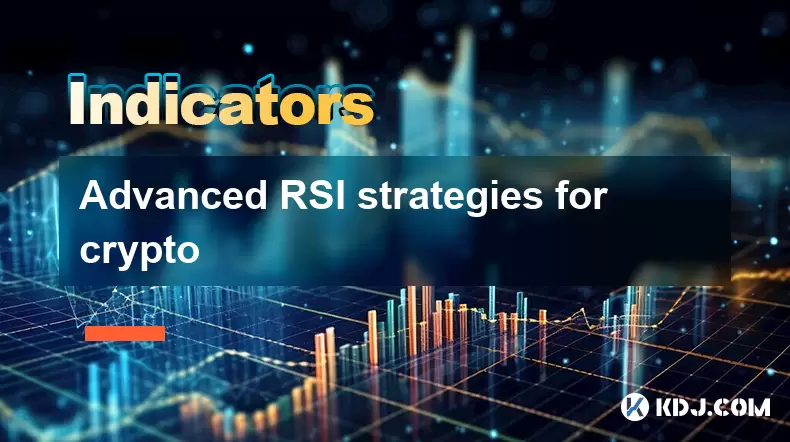
Advanced RSI strategies for crypto
Jul 13,2025 at 11:01am
Understanding the Basics of RSI in Cryptocurrency TradingThe Relative Strength Index (RSI) is a momentum oscillator used to measure the speed and chan...
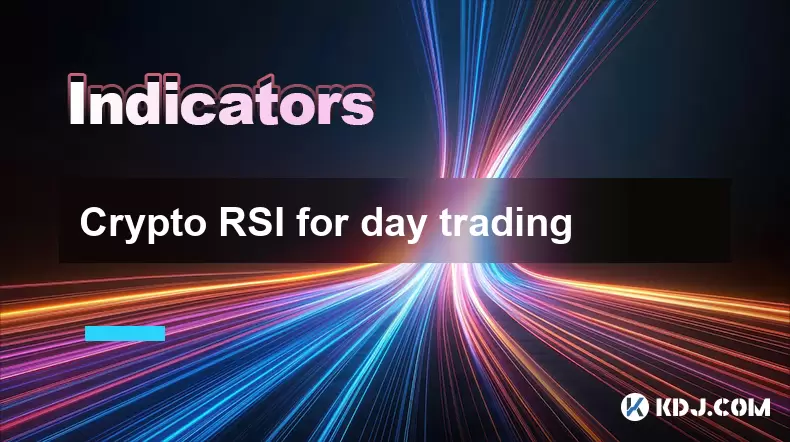
Crypto RSI for day trading
Jul 12,2025 at 11:14am
Understanding RSI in the Context of Cryptocurrency TradingThe Relative Strength Index (RSI) is a momentum oscillator used to measure the speed and cha...
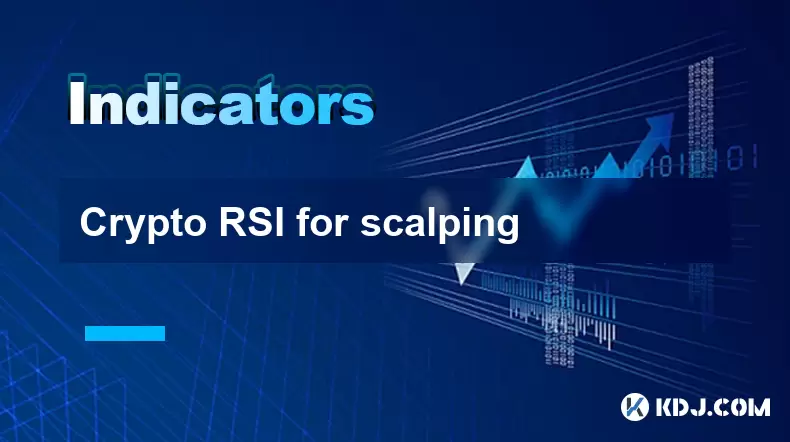
Crypto RSI for scalping
Jul 12,2025 at 11:00pm
Understanding RSI in the Context of Crypto TradingThe Relative Strength Index (RSI) is a momentum oscillator widely used by traders to measure the spe...
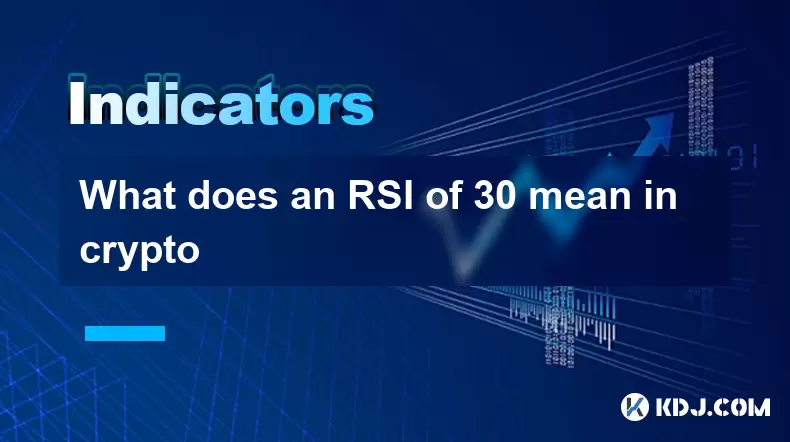
What does an RSI of 30 mean in crypto
Jul 15,2025 at 07:07pm
Understanding RSI in Cryptocurrency TradingRelative Strength Index (RSI) is a momentum oscillator widely used in cryptocurrency trading to measure the...
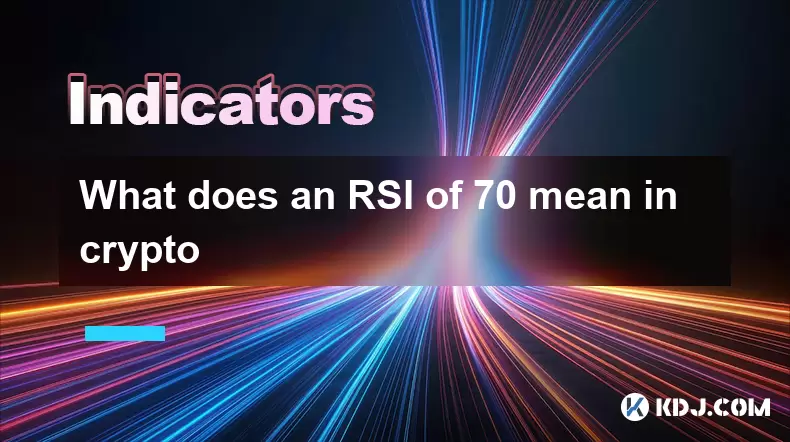
What does an RSI of 70 mean in crypto
Jul 13,2025 at 06:07pm
Understanding the RSI Indicator in Cryptocurrency TradingThe Relative Strength Index (RSI) is a widely used technical analysis tool that helps traders...
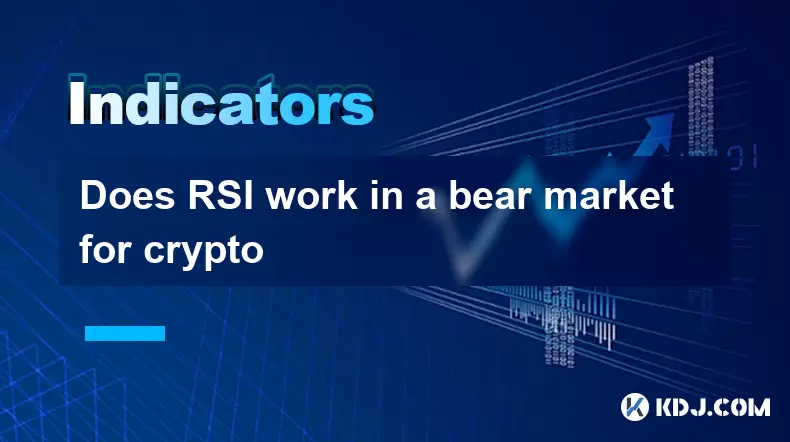
Does RSI work in a bear market for crypto
Jul 16,2025 at 01:36pm
Understanding RSI in Cryptocurrency TradingThe Relative Strength Index (RSI) is a momentum oscillator used by traders to measure the speed and change ...

Advanced RSI strategies for crypto
Jul 13,2025 at 11:01am
Understanding the Basics of RSI in Cryptocurrency TradingThe Relative Strength Index (RSI) is a momentum oscillator used to measure the speed and chan...

Crypto RSI for day trading
Jul 12,2025 at 11:14am
Understanding RSI in the Context of Cryptocurrency TradingThe Relative Strength Index (RSI) is a momentum oscillator used to measure the speed and cha...

Crypto RSI for scalping
Jul 12,2025 at 11:00pm
Understanding RSI in the Context of Crypto TradingThe Relative Strength Index (RSI) is a momentum oscillator widely used by traders to measure the spe...

What does an RSI of 30 mean in crypto
Jul 15,2025 at 07:07pm
Understanding RSI in Cryptocurrency TradingRelative Strength Index (RSI) is a momentum oscillator widely used in cryptocurrency trading to measure the...

What does an RSI of 70 mean in crypto
Jul 13,2025 at 06:07pm
Understanding the RSI Indicator in Cryptocurrency TradingThe Relative Strength Index (RSI) is a widely used technical analysis tool that helps traders...

Does RSI work in a bear market for crypto
Jul 16,2025 at 01:36pm
Understanding RSI in Cryptocurrency TradingThe Relative Strength Index (RSI) is a momentum oscillator used by traders to measure the speed and change ...
See all articles

























